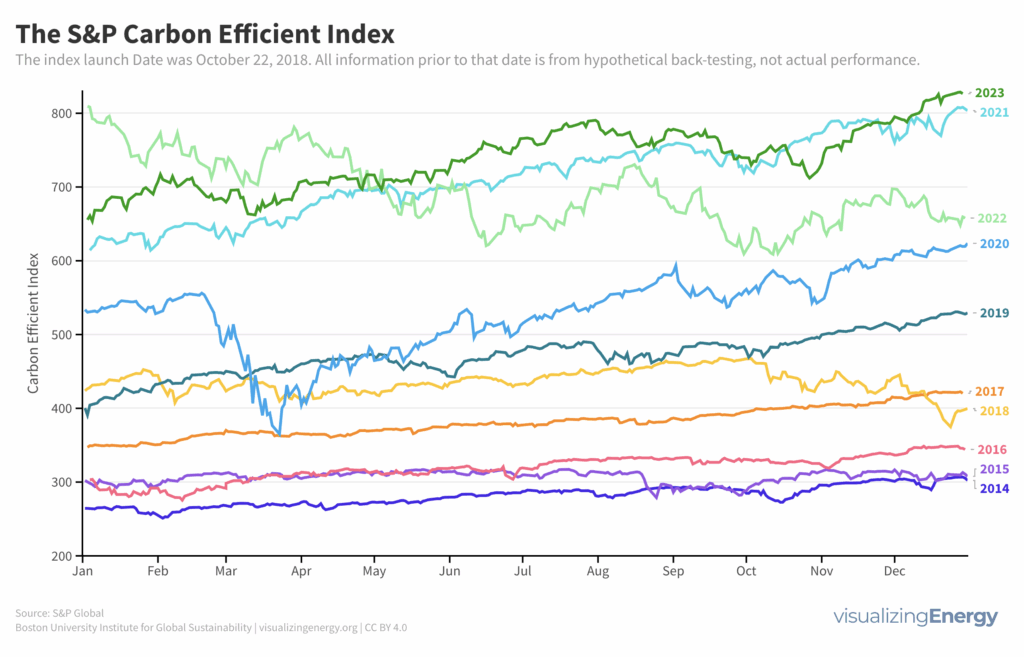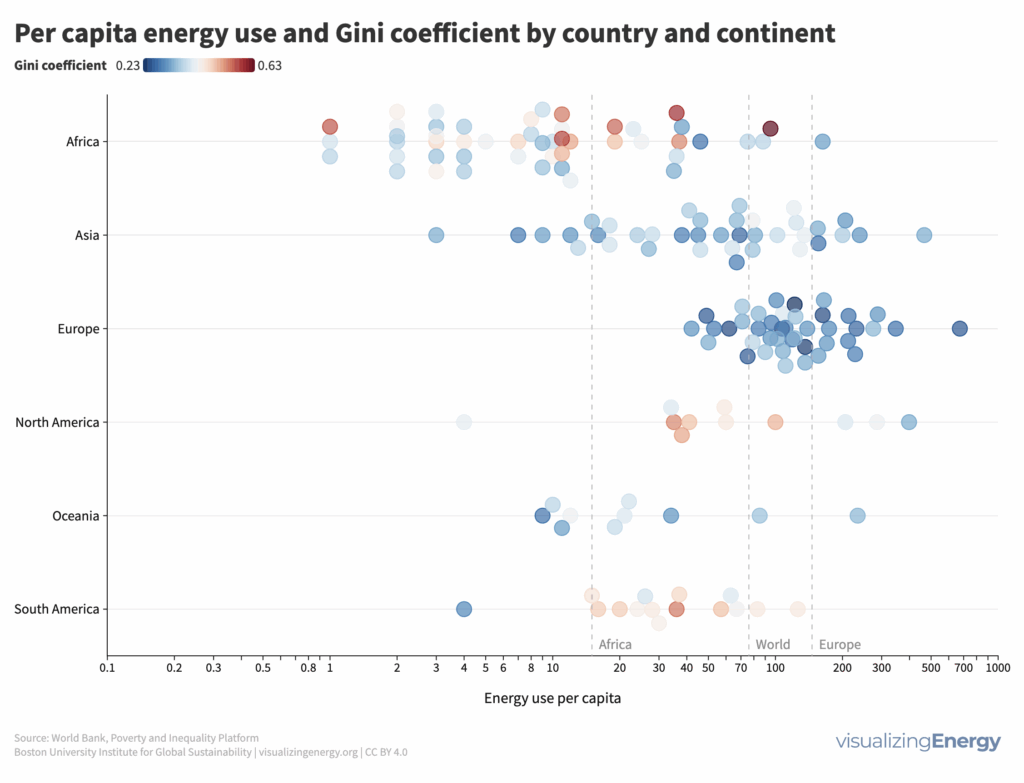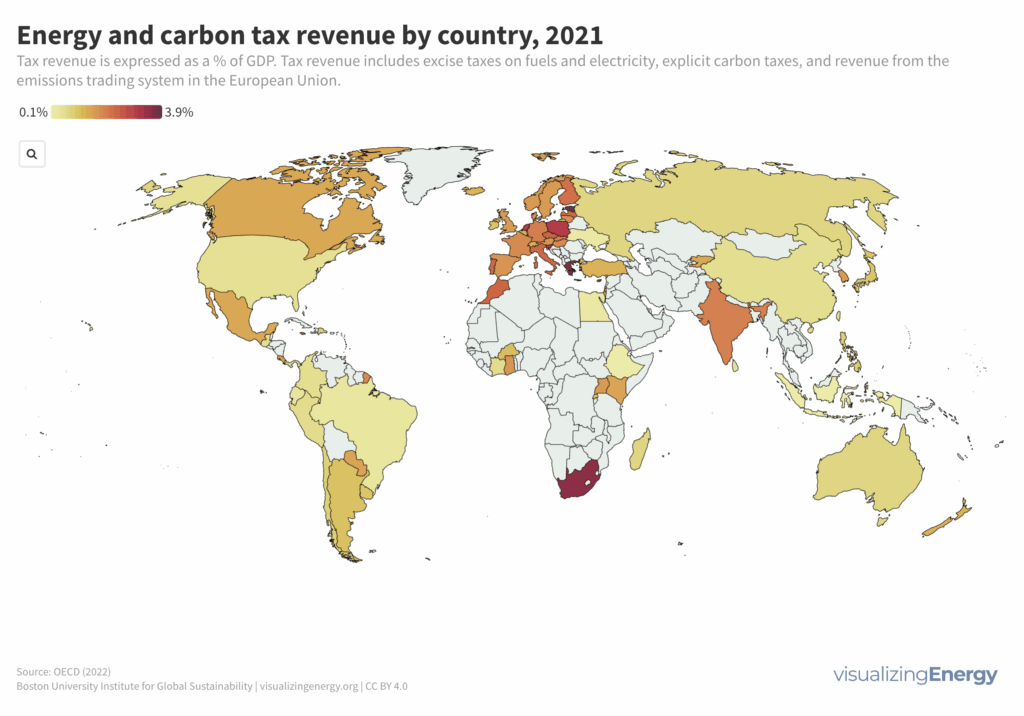What U.S. states have the highest fuel taxes?

Americans closely monitor gasoline prices, viewing them as indicators of leaders’ success, economic health, and environmental policy effectiveness. The price of crude oil largely influences gas prices, yet federal and state taxes play a significant role. These taxes, popular due to revenue generation, heavily fund highway and mass transit spending.
Where have companies committed to the Principles for Responsible Investment?

The Principles for Responsible Investment (PRI) were launched in 2006 by a group of institutional investors and the United Nations to promote sustainable and responsible investment. It has over 5300 signatories in 80+ countries, holding more than $65 trillion in assets. However, there are criticisms about its voluntary basis and enforcement mechanisms.
The S&P 500 Carbon Efficient Index

Stock market indices reflect market performance and health. Carbon indices, like the S&P 500 Carbon Efficient Index (CEI), weigh companies based on carbon emissions per revenue unit, aiming for lower carbon exposure without altering industry allocations. Over 5 years, the CEI boasted a robust 13% return, outperforming many major indices.
Gender mainstreaming in clean energy: informal urban settlements in sub-Saharan Africa

Approximately 2.3 billion people globally lack access to clean cooking, posing health risks, especially for women and children in low- and middle-income countries. Gender mainstreaming is crucial for achieving universal clean energy access. However, integration into energy projects in informal urban areas remains fragmented, necessitating better support and capacity building.
What is the relationship between energy use and income inequality?

The Gini coefficient assesses income inequality globally, with values ranging from 0 to 1. The impact of energy use per capita on inequality diminishes after reaching 30 GJ. In Europe, there is a pattern of high energy use and low inequality. However, as countries develop, increased energy use doesn’t consistently translate to reduced income inequality.
Gender diversity in the United States energy workforce

Gender equity is vital for economic stability. In the U.S. energy industry, women hold 27% of jobs, despite recent growth. Challenges persist globally in solar, wind, and hydropower industries, emphasizing the need for ongoing efforts to address gender disparities.
Does the United States financial system support global climate goals?

Major financial institutions’ practices are not climate-friendly, with policies disconnecting short-term targets from required long-term climate actions. A Columbia University report highlights financial institutions’ political influence, using lobbying and campaign contributions, often obstructing climate policy. The report suggests measures for shifting towards positive climate action.
What is the status of women in the global hydropower sector?

Hydropower, the world’s largest source of renewable, low-carbon electricity, faces a significant gender gap. Women hold only a quarter of jobs globally, mainly in non-technical roles. Factors hindering women include a lack of STEM skills, limited awareness, inadequate female role models, and managerial bias. Improved family-friendly policies and female inclusion in policymaking are required for industry advancement.
Where do energy taxes have the largest macroeconomic impact?

Economic policies impact the volume and nature of energy use and pollutants, including greenhouse gases. Government interventions typically include emissions trading, carbon taxes, and excise taxes. The OECD found that tax and subsidy policies influence GHG emissions and energy consumption globally. Current energy tax policies, however, do not align with GHG reduction goals.
What is the relationship between energy use and social progress?

The Social Progress Index (SPI) measures a nation’s overall well-being beyond GDP, with 12 components and 60 indicators. Nations in Sub-Saharan Africa and the Middle East have lower SPI rankings, while Canada, North European countries, Japan, and Australia consistently score high. Energy use affects SPI, but higher consumption doesn’t always lead to greater social progress.
